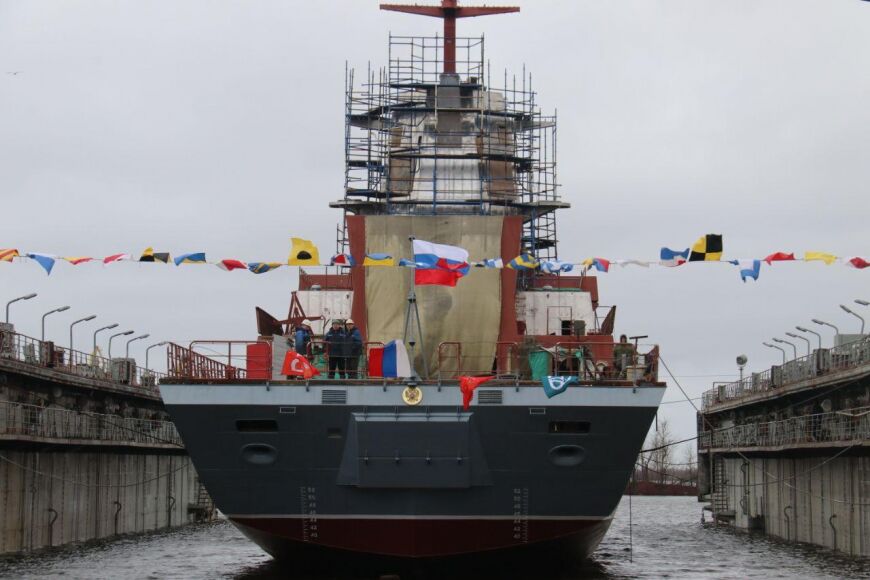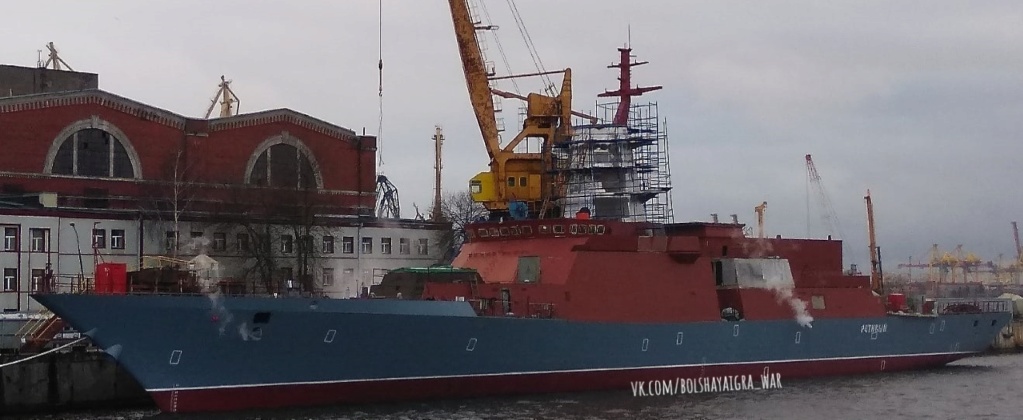Modern radars have home on jam which is just a passive radar mode. There is no need for two versions unless you want it to lock on L band radar which is mainly used for surveillance radars.
My understanding is that the Kh-35 uses MMW radar frequency radar which is rather difficult to jam and develop ARMs for use against, the passive radar homing I am suggesting is for use against air defence and search radars used on ships which are almost always cm wave or larger wave radars for which a MMW radar antenna would not be suitable to detect... it would need to be like the radar seeker fitted to some Kh-31 ARMs which have a passive antenna.
A directional L band radar would be tricky to fit in to a missile nose sized antenna... the radar used in the Su-57 and Su-35 is an array that fits in the wing leading edge and includes multiple elements to get directional performance.
(ie you can't just take one AESA radar TR element from a radar and use that as a seeker for a missile...)
Uran doesn't take space. For exemple the back of kirovs has space for a good amount of them.
??? So Uran does not take space but Kirovs (enormous ships by the way) have lots of space for them... ???
That surface area is empty for a reason.... RCS... plus if you are going to cover a battle cruiser in missile tubes it would make more sense to cover it in advanced TOR missiles because such a big ship is going to be the focus of enemy forces till it is dead like the Bismark....
Bigger doesn't mean more expensive. If you keep the same missile but increase just fuel section to hit further.
But there are already bigger missiles with more fuel already able to do the job... why make the Kh-35 bigger and longer ranged when the Club family of missiles includes very long range low flying subsonic land attack and anti ship missiles?
They could even be scaled up to fully fit their UKSK launch tubes with ranges of thousands of kms if needed...
There is even versions with supersonic terminal portions that increase the chance of penetrating the defences of even the most modern ships...
260km is not enough for russians which make anti ship missiles with ranges greater than 500km.
For patrol boats and corvettes it is plenty... for operations no out in the middle of the Pacific or Atlantic it is plenty too.
In the middle of pacific or atlantic a kirov can use the kh35 to hit tankers and refueling ships while keeping the uksk for warships. Then its better ifbyour kh-35 has a range of 500-600km as you can cover more space and forbid the area to refueling/transport ships.
I would suspect their priority will be other platforms... anything could take out a tanker or refuelling ship or cargo vessel... and against protected ships defending themselves Onyx and Zircon can do it with one or two missiles instead of having to launch a volley to overwhelm them...
For the development of a stealth missile I suspect the Kalibr family would make more sense
Indeed, they already probably have excellent range and capable seekers...
But more importantly, because it has variants with a supersonic terminal stage. That would be an ideal stealth missile; one that creeps up to the target as much as possible, but inevitably it will be detected at some distance - and at that stage it can switch the supersonic on and close distance with the target as quickly as possible to minimize their reaction time.
Agree... in fact with new scramjet technology they could redesign it... currently it uses a turbojet engine and lots of fuel for a long subsonic flight to the target where the second stage solid rocket fuelled motor accelerates the missile for the last 20-30km of the attack... imagine a missile that can detect when it is being tracked and instead of a turbofan engine it has a scramjet engine... so it is flying along at subsonic speed really low on this scramjet engine... it is detected so it fires the solid rocket booster that burns and accelerates the missile from mach 0.7 up to mach 2.9... but instead of dumping the subsonic portion it then sheds the solid rocket portion and maybe the now empty 3/4ths fuel tank so what is left is the scramjet, some fuel, and the guidance system and warhead... the scramjet is now maintaining speed and perhaps slowly accelerating the weapon to higher and higher speeds.
The reason for this is with the standard missile if it is detected 100km from the ship then it has to either fly 70km at subsonic speeds and risk interception, or accelerate to almost mach 3 but run out of energy before it gets to the ship target and basically hit the water.
With this modification, the solid rocket booster is now to push the entire weapon up to speeds where the scramjet can more efficiently not only maintain speeds but also perhaps accelerate further over a greater distance than a solid rocket could do on its own.
...or maybe just rocket/scramjet all the way like Zircon... with acceleration over the last 400km at low altitude using the scramjet motor alone...


 kvs
kvs



